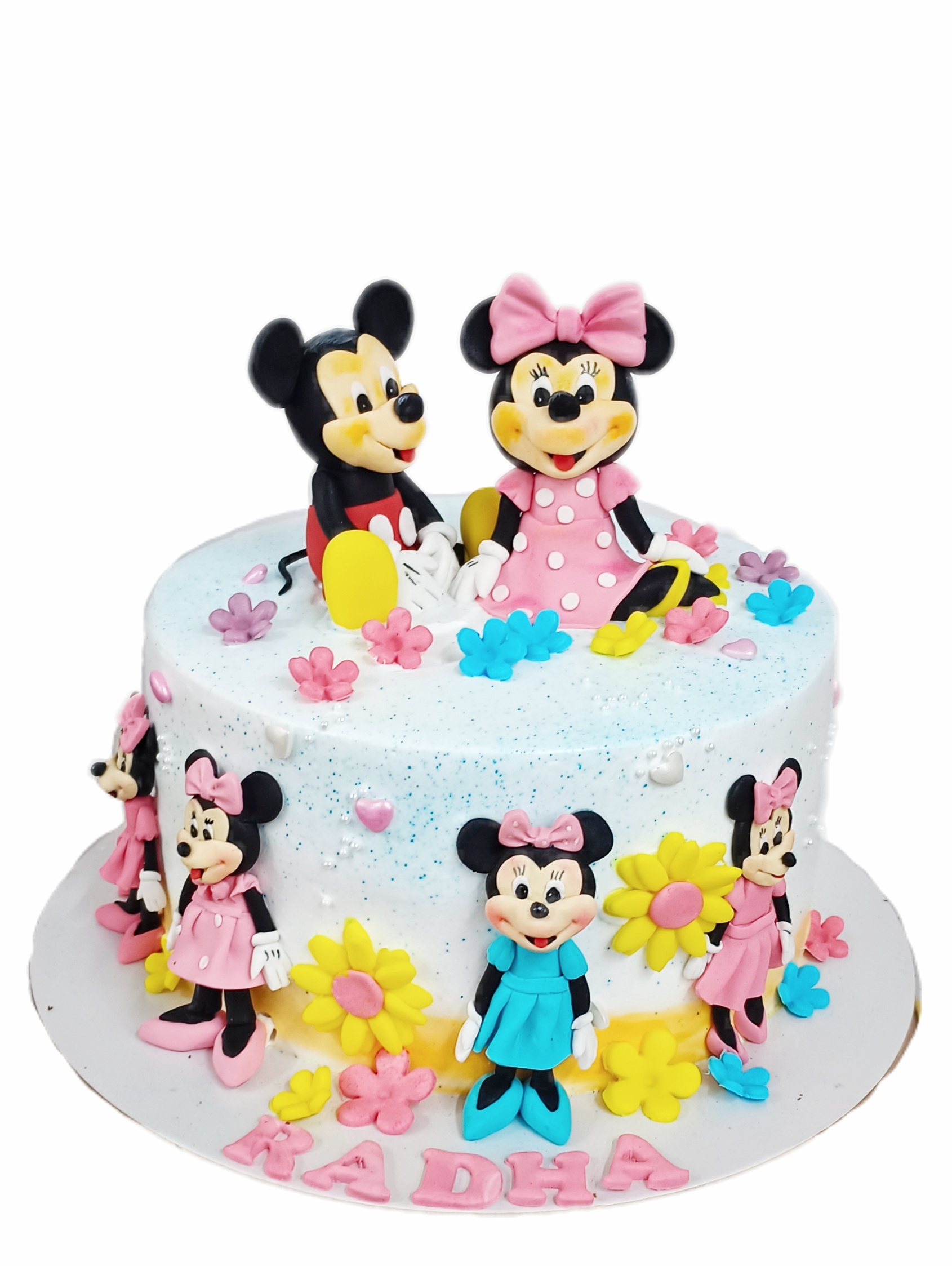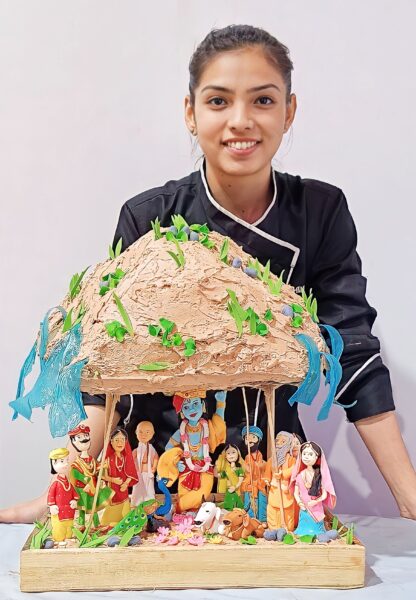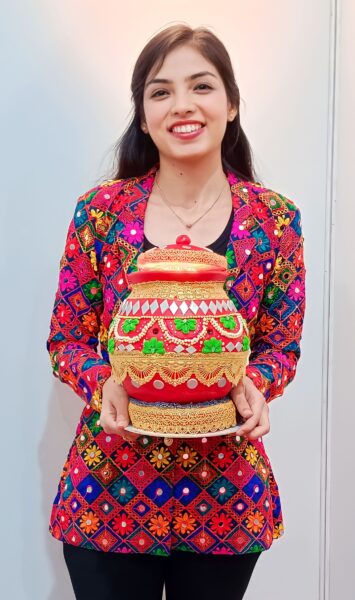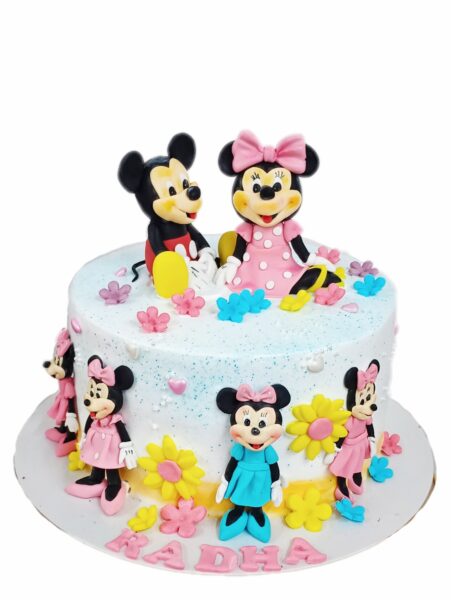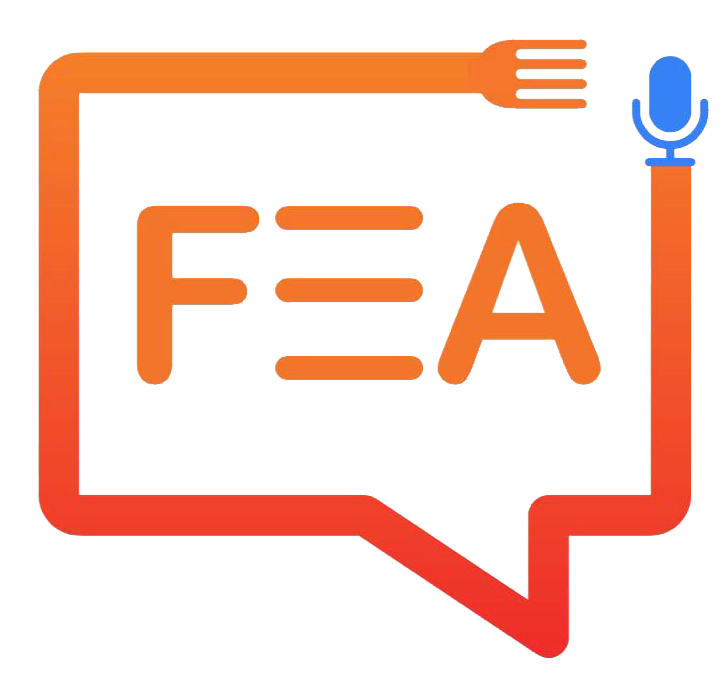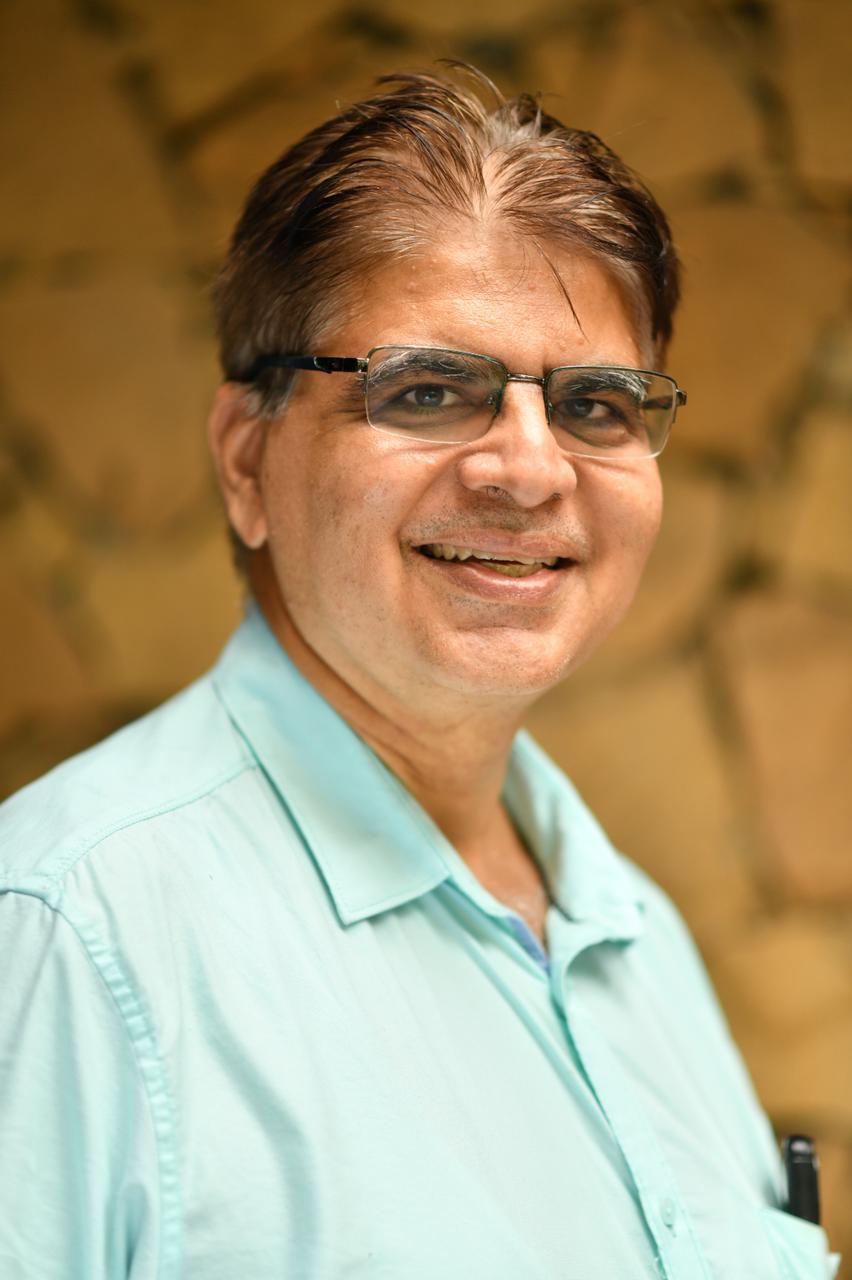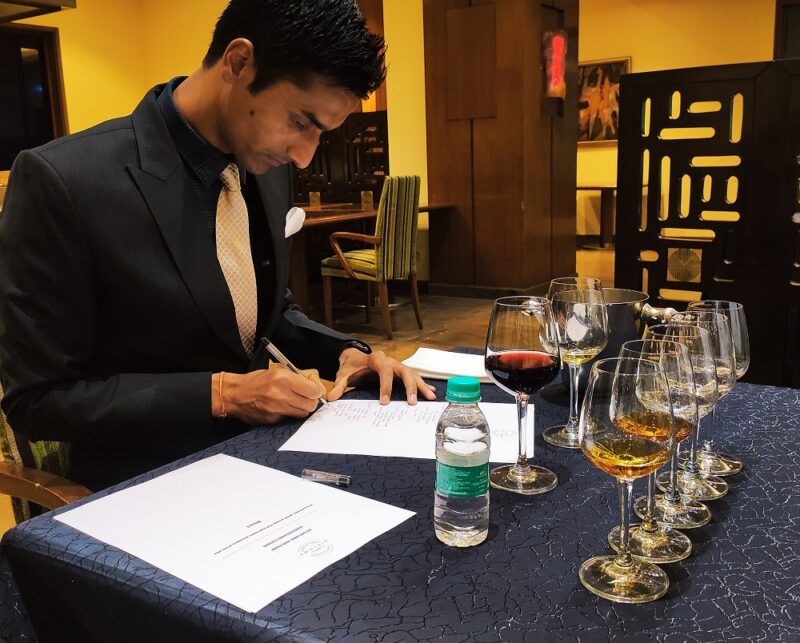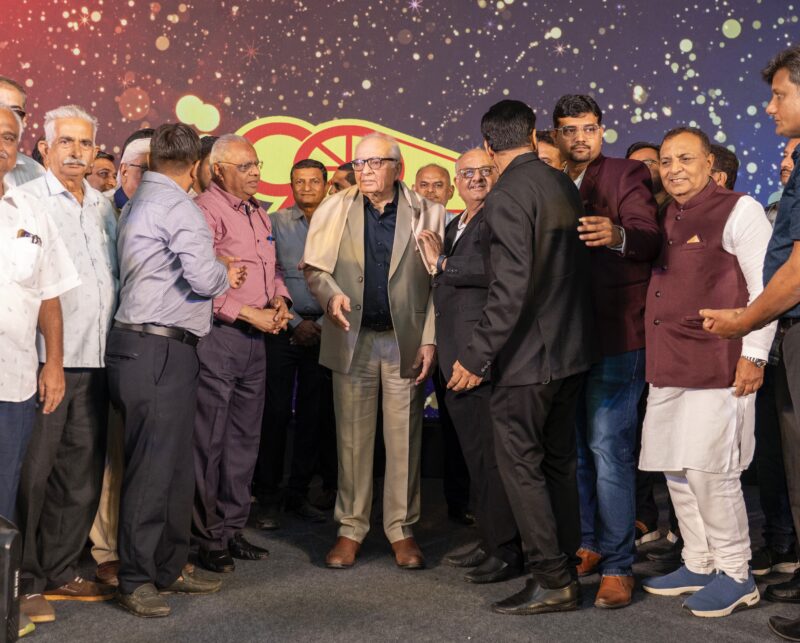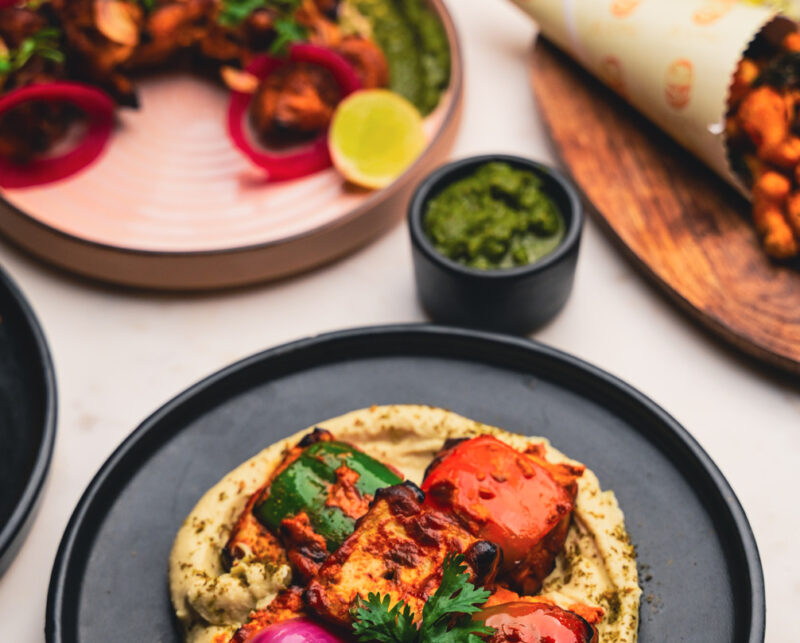Dhvani Hindocha,
Have you ever paused before blowing a candle on your birthday cake and asked
why? Celebrating a birthday, anniversary or any occasion is now incomplete without
a cake. Every small or big event is always accompanied by a cake, more specifically
a theme cake nowadays. You will often see extravagant sugar or chocolate
decorations studded cakes which make it a grandeur and centre of attraction in an
event. More than a part of our celebration, a cake is embedded with symbolism,
rituals, emotions and cultural significance too.
The word ‘cake’ comes from ‘kaka’, an old Norse word meaning ‘flatbread’. This
suggests that the early cake was not anything like we have today. It was something
like a cookie or bread; dry and plain often flavoured with fruits or nuts and sometimes
savoury too. The traces of early cakes can be found in 4 th century BC at the ancient
Egypt and Rome where yeast was used as raising agent and honey as a sweetener.
Roman cake tradition had some popular flavours of olive oil, rosemary and other
herbs in a savoury cake and also a popular plum cake that we know today loaded
with fruits and nuts. Egyptians used to make cakes on religious festivals and for
offering it to Greek goddess. Also, the interesting fact about lighting a candle over a
cake comes from this era where they used to lit many candles over a round cake as
to honour and symbolize goddess of the moon, Artemis and lunar light. Sugar was
an expensive commodity during the Middle Ages which limited the cake baking for
only wealthy community for grand wedding ceremonies and Christmas however
during the Renaissance sugar became much affordable and started to pave its way
through different communities. Later, in 18 th century butter and eggs became popular
cake ingredients to make it tender, richer and delicious. The cake recipes got further
refined and standardized in France. Moreover, the accessibility of sugar and
invention of oven made it easier to bake a cake unlike the traditional hearth oven
with difficulty in temperature control. In 1850, with the invention of baking powder as
a raising agent brings us to the modern version of cakes we know today. Gradually,
revolutionary changes surfaced with the invention of rotary beater and cake moulds.
Also, with the spread of culture in Europe, angel food cake and chiffon cake were
created in United States.
In 1883, during the British rule in India, a British planter named Murdoch Brown
brought a luscious plum cake from England and requested for a similar version in
India. There comes the birth of cakes in India when Mambally Bapu, a local baker of
the Royal biscuit factory in Thalassery, Kerala made the first Christmas cake by
incorporating local ingredients like cashews to create a version of plum cake that
became very popular. Later with the inventions and accessibility cakes became very
popular leading to rise in bakeries in India. Different regions started to develop their
own versions of cake with their native ingredients and culinary traditions. Home
baking also gained popularity as cakes began to be an integral part of every
celebration and festivals. Modern Indian cake culture is a perfect combination of
European footprint and reginal traditions with a trendy touch. You can now see a
cake loaded with seasonal fresh fruits and with traditional flavours like the most
popular being a Ras-malai cake.
The icing over a cake that we see today became popular much later. The icing first
appeared in 16 th century which referred to icing made with boiled sugar, egg whites
and often with flavourings to be covered over a cake and reheated to get a hard and
glossy finish. Icing techniques has evolved a lot over time. Marzipan, a sweetened
almond paste believed to be originated in Middle East was used as decoration in
early cakes, then sugar paste and later royal icing also gained popularity. The origin
of fondant or sugar paste can be traced back to 16 th century in France. Earlier it was
made with just two ingredients, sugar and water boiled to a specific temperature then
cooled and kneaded. It was mainly used to cover cakes and for fillings. Later the
recipe evolved by addition of gelatine, glucose syrup, glycerine and stabilizing
agents to improve its texture and workability. This makes it a versatile medium and a
staple for cake decorating which is suitable for several purposes such as rolling,
sculpting and making intricate designs. Nowadays, various mediums are used in
cake decorating. Buttercream, whipped cream and varieties of chocolate ganache
are used for cake frosting. Other materials similar to sugar paste like gum paste,
modelling paste and modelling chocolate are used for creating specific decorations.
Wafer paper and rice paper are also used to create exclusive contemporary designs
and royal icing for detailed vintage cakes. With all these, a cake is not limited to
combining ingredients and baking up a flavourful sponge cake but a canvas for
artists to create exceptional edible art. Various mediums offer an array of
opportunities to make innumerable designs by using different techniques such as
modelling, painting, stencilling, texture/relief art, piping, carving and many more.
The cake industry is growing exponentially from last few decades with increasing
demands and wide scope of opportunities. Along with culinary and pastry schools,
many institutions offer specific courses dedicated to the art of cake decorating.
Exhibitions specific to bakery and cake industry have provided a huge platform to
cake artists, home bakers, professional pastry chef and various companies. Bakery
Business, Cakeology, India Bake Show, Aahar International Food and Hospitality
Fair, Aakar Hospitality Expo, CBEX India and Khadhya Khurak are some of the
popular exhibitions in India. These expos play an essential role of networking
platform for industry suppliers with buyers. Innovation, technologies, machinery and
raw materials to packaging items all can be found under the same roof. Some of the
popularbrands dealing in range of bakery ingredients, cake and chocolate
decoration, tools and equipment in the Indian cake industry are Ultimakes,
Bakersville, Magic Colours, Sugarin and Nandi. Not only these products, but
marvellous showpieces by the industry experts, insightful demonstration and various
competitions are also held which contribute to the constant growth and innovation
within the industry. The cherry on the cake is the award ceremonies in the industry
which identifies and appreciates the best in their field which keeps up the spirit of
creators to thrive and push themselves for bringing up the excellent works. Also, the
cake shows are breaking the traditional limitations and bringing up a new vision. Like
some amazing edible fashion shows being organized, it may sound like a paradox
but a true shift towards infinite opportunities. Some of my favourite creations belong
to these shows where along with many artists across India I created something as a
tribute to my culture – A Garbo cake and Govardhan Puja Cake. The cakes are not
just bound by tiers anymore but takes a shape of anything and everything you can
imagine of. From Complex structured cakes to human busts, life-size and hyper-
realism, the cake industry is overflowing with extraordinary ideas and creativity. Even
a regular tiered cake is turned into a canvas of creativity with edible cute and
detailed figures, flowers and much more.
The social media boom resulted in widespread adoption of trends and more access
to the online learning options. It revolutionized the cake industry with content
creators presenting their business online. The online presence helps in achieving
higher sales with wider reach to the potential customers. Promotions, marketing and
creating brand awareness are easier and more accessible to even beginners. Online
communities on Facebook, WhatsApp and Instagram help the cake artist to stay
connected. Artificial intelligence is also playing a huge role in cake industry. When
you search for any cake images online, you may find more cake images that are AI
generated than the actual hand-made cakes. The designs of cakes are being
generated by AI with different prompts based on how you want your cake to look like.
Now this has their own benefits and drawbacks. A cake artist can get their ideas
reflected and outlined for a reference digitally by using AI which can help them to
plan out while making a cake. However, customers coming up with an AI generated
cake wants a same cake which is not quite possible because you can definitely
create a similar version but sometimes certain designs made by AI are not practically
possible. Also, sometimes customers come up with the images of cakes that are
made in European countries and they want same in India. Here there are certain
barriers which are taken into consideration like atmosphere, medium used and other
specific requirements of customer which does not withstand with a reference image.
In some cases, it also pushes the creativity of artists to try something new and excel
with their skills.
The increasing awareness of health problems, their causes and importance of
nutritious diet has led to the exploration and acceptance of healthy bakes too.
Without compromising the cake to be an integral part of our lives people are
nowadays demanding for a healthier version. For example, a sugar free cake, whole
wheat flour and millet-based cakes. Also, cakes are made by substituting some
ingredients from the recipe to keep certain allergens into consideration. For example,
a gluten free cake, vegan cake and eggless cakes.
MEENA’S CAKES
When I talk about cakes, I deeply associate it with my aunt’s journey of 32 years of
making cakes in a small town where I have seen cakes all around since my birth.
From its early versions to show stealing centre pieces it is an awestruck journey.
From struggling to get the right tools, equipment and materials in early days to doing
some frugal innovations to reach today with vast options and opportunities I have
seen her come a long way. She is indeed my favourite cake artist. I am a culinary
enthusiast since childhood which paved my path to IIHM, a hotel management
institute, a professional chef training and today with my skills, love for art and
consistent support of my aunt, Ms. Mrudula Hindocha, I create fondant cake toppers
to add a life in every cake. We run a family business where not just cakes are baked
but the emotions are carried along with every cake made at ‘Meena’s Cakes’.
Fondant cake toppers have been such an integral part of every cake nowadays
which made an opportunity for me to establish ‘Sugar Diorama’ where I not only
make toppers for our outlet but also ship them to various bakeries and home bakers
to make their cakes shine through. Having my work featured in several national and
international magazines, being finalist for modelling award by ICA and for promising
talent India by IICMA and receiving so much love and appreciation for my work make
me moving forward to receive greater milestones. Also, being awarded with woman
leaders and rising star in hospitality by my own college gratifies me in true sense. I
specialize in making miniature hand-crafted fondant cake toppers which includes
cartoons, animated characters and human figurines.
The cake industry is developing day by day with innovation, creativity and wider
opportunities nationally and internationally. Here the scope of surviving in this fast
paced industry is consistency, best quality and adopting the trends quickly.
ABOUT THE AUTHOR
Alumni of IIHM – Ahmedabad and University of West London, Dhwani Hindocha is a sugar
artist and cake designer. Her own venture, Sugar Diorama, specialises in thematic cake
design and sugar art.


